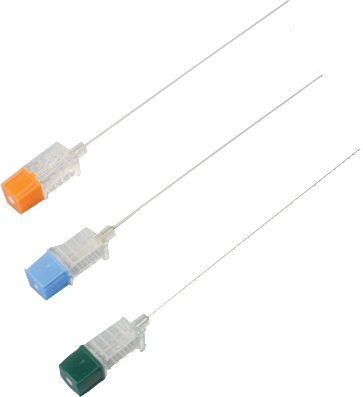
Disposable Spinal Needle (Quinke Type)
Spinal needles are used to perform spinal epidural injections. Disposable quincke type needles include sharp, cutting tips and a hole at the end of the needle. The hole is in the middle of the needle, and is where the medication is injected. They are typically made of plastic or stainless steel.
Disposable Spinal Needle (Quinke Type)
A Disposable Quincke Spinal Needle is a needle that is designed for use in spinal taps. It is a thin, hollow needle that is inserted into the spinal canal in order to withdraw cerebrospinal fluid (CSF) for diagnostic purposes. The Quincke needle is named after its inventor, Heinrich Quincke, who developed it in 1891. The purpose of a Disposable Quincke Spinal Needle is to collect a sample of CSF in order to diagnose various conditions such as meningitis, encephalitis, or syphilis. CSF is the clear fluid that surrounds the brain and spinal cord and helps to protect them from injury. A small amount of CSF can be collected using a Disposable Quincke Spinal Needle and then analyzed in a laboratory for the presence of certain diseases or infections.
A disposable Quincke spinal needle is a type of needle that is often used for spinal taps and other procedures involving the spine. These needles are usually made of stainless steel and have a sharp point. They are also often times longer than regular needles, which allows them to reach the spine more easily.
There are three types of disposable Quincke spinal needles: the atraumatic needle, the bevel-tip needle, and the pencil-point needle. The atraumatic needle is designed to minimize tissue damage and pain during insertion. The bevel-tip needle has a sharp tip that helps it pierce the dura mater more easily. The pencil-point needle has a blunt tip that reduces the risk of puncturing the dura mater and causing a CSF leak.
There are a few things you need to do before and after inserting the needle in order to ensure proper usage. First, make sure you have all the necessary supplies. You will need gloves, a sterile dressing, and an antiseptic solution. Second, clean the area where you will be inserting the needle with the antiseptic solution. Third, put on a pair of gloves. Fourth, insert the needle into the desired location. Fifth, remove the gloves and discard them properly. Sixth, apply pressure to the injection site with a sterile dressing. Seventh, monitor the injection site for any signs of infection.